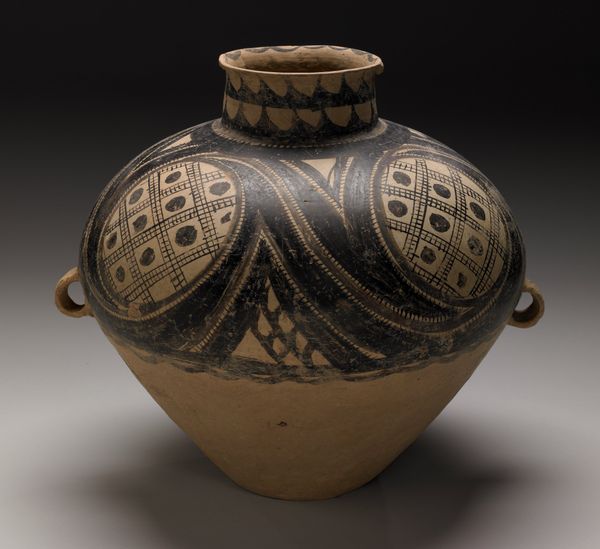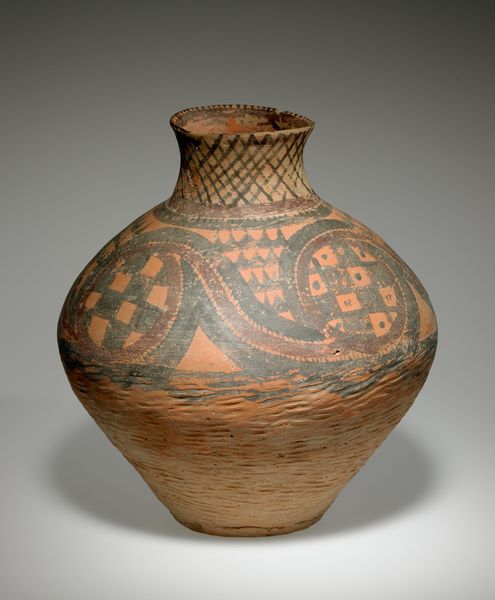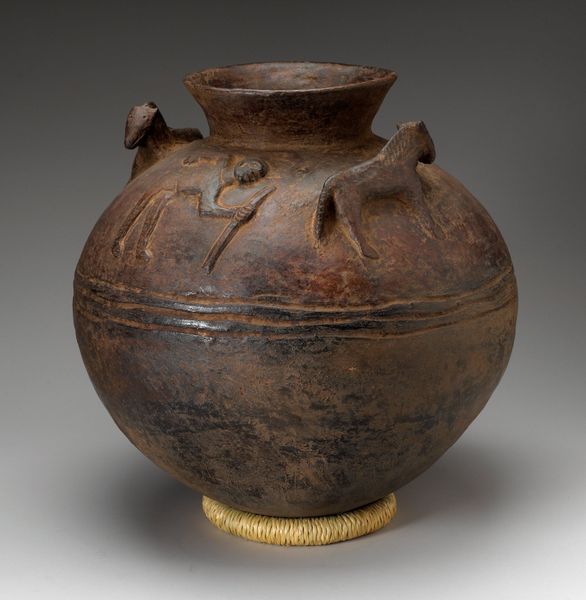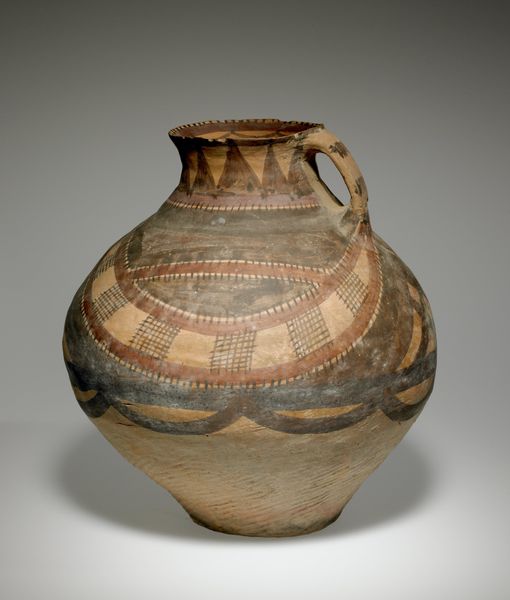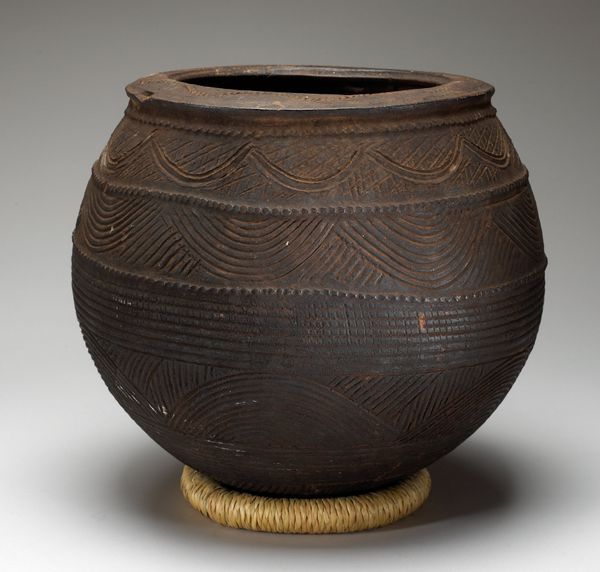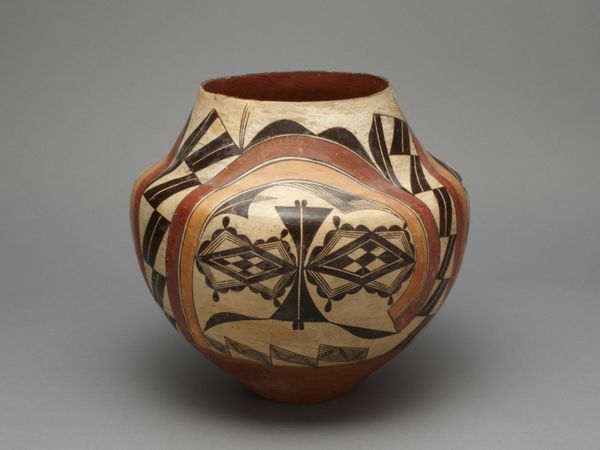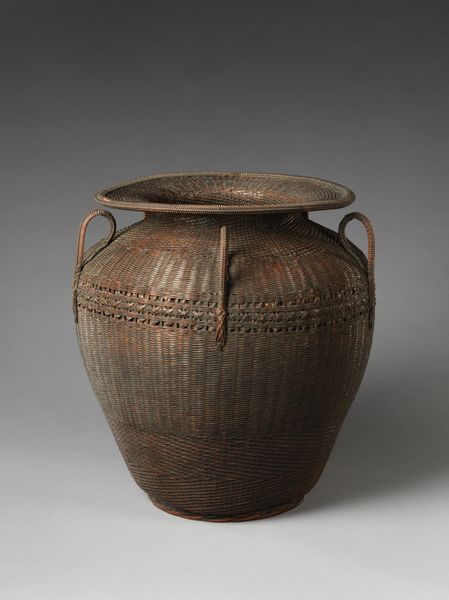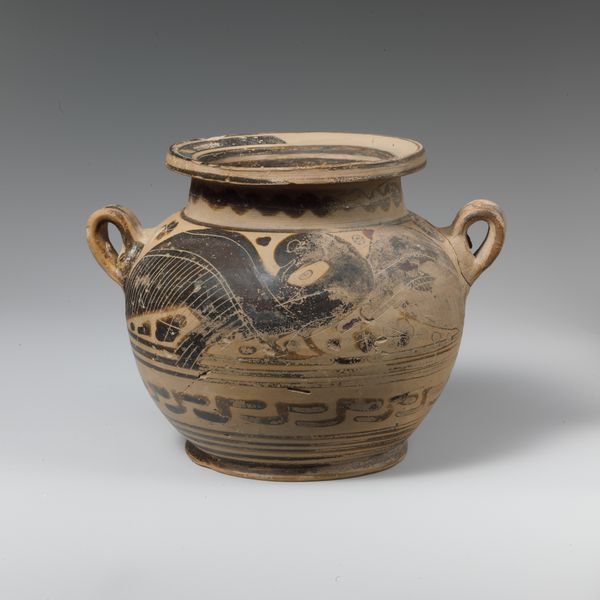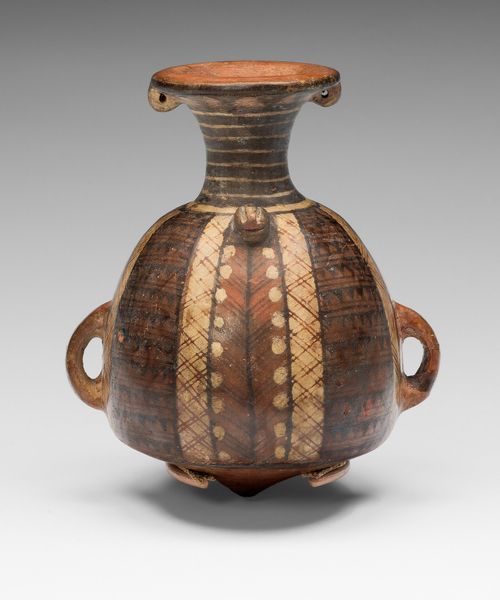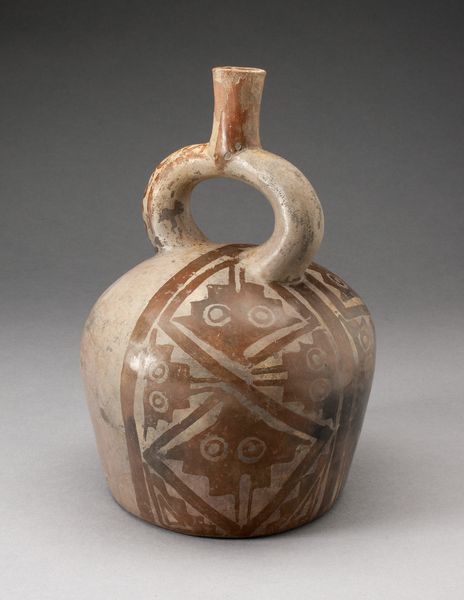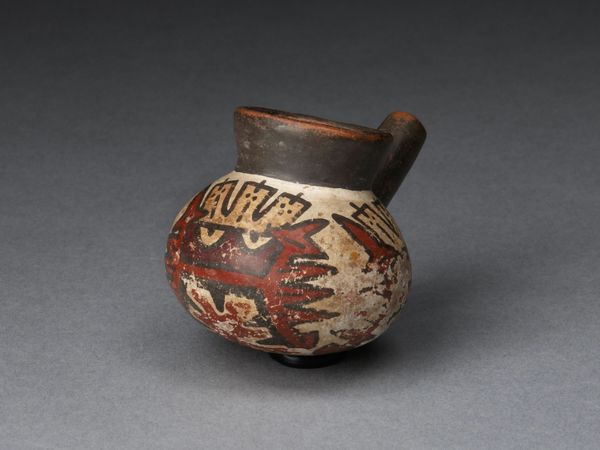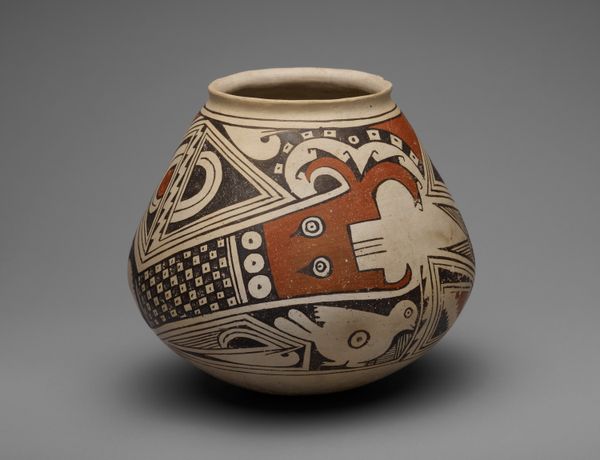
ceramic, earthenware
#
ceramic
#
earthenware
#
geometric
#
ceramic
#
indigenous-americas
Dimensions: 40.6 × 48.2 cm (16 × 19 in.)
Copyright: Public Domain
Curator: Oh, this piece hums with stories! What strikes you first about it? Editor: Its spherical form, segmented by vertical bands, is rather captivating, actually. There's a balance between the overall shape and the distinct, almost geometric patterns adorning its surface. Curator: It's called a Polychrome Jar, dating back to around 1770, and it was created by an artist from the Cochiti Pueblo, or K’autïm’é as they call themselves. It’s currently housed at the Art Institute of Chicago. These jars, made from earthenware, were so much more than mere storage. Editor: Earthenware gives it this beautifully matte, almost earthy quality, doesn’t it? The decorations though, what can we deduce from their configuration and inherent visual character? I think about binary oppositions here: curvilinear vs. rectilinear forms, dark paint versus the clay ground… Curator: I think you are onto something important. You have to remember that Pueblo pottery wasn't just about decoration; the designs often reflect their worldview, their connection to nature, and their spiritual beliefs. Each shape, each line, likely held meaning within the community. Editor: Do the vertical lines impose a framework on the narrative of the object? I think that this element introduces an ordering principle that could allow one to segment, dissect, and re-assemble. It gives a staccato effect, of visual rhythm. Curator: Maybe! You know, when I look at this jar, I see more than just a beautiful object; I see generations of skill and artistry, passed down through families. I wonder what the artist was thinking, feeling as they were painting these designs? Editor: That consideration opens a pathway to affective art history. It does beckon us to appreciate how indigenous cultures melded functional objects with artistic expression and cultural meaning. The patterns are like a language. Curator: Yes. It’s also remarkable how something so utilitarian can be so incredibly beautiful and evocative, even centuries later. The fact that it survives and that it can spark a debate about narrative frameworks proves this. Editor: I wholeheartedly agree. It truly exemplifies the symbiosis of function and aesthetics, echoing a sophisticated sensibility for pattern, color, and, I would dare to venture: symbolic forms of spatial orientation. A wonderful encounter.
Comments
No comments
Be the first to comment and join the conversation on the ultimate creative platform.
